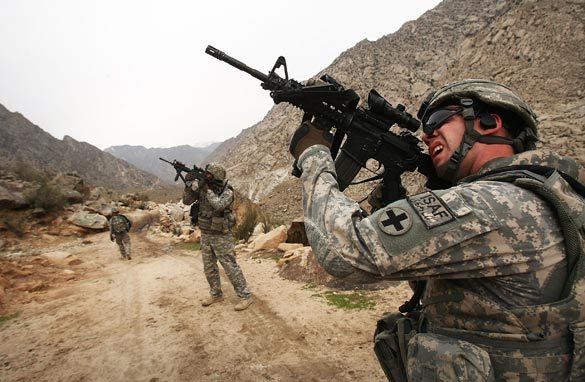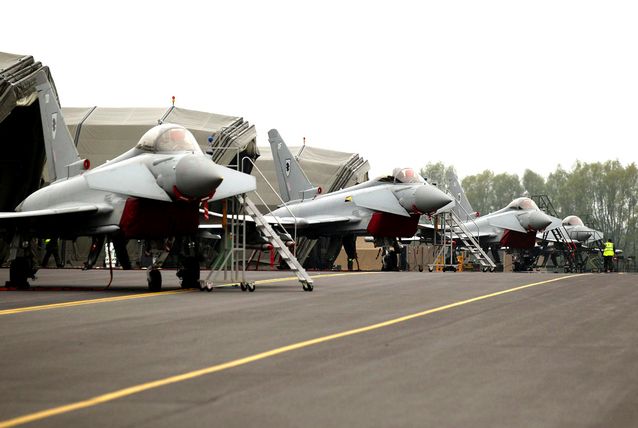As ISAF prepares to withdraw its troops from Afghanistan, the instability of transport routes out of the country through Pakistan has opened up a powerful window of opportunity for Uzbekistan. A route northwards through the former Soviet state has become a preferred alternative to an exit via Karachi for the removal of vast quantities of military equipment (an article in Der Spiegel estimated that some 130,000 soldiers must leave Afghanistan within two years, together with at least 70,000 vehicles and 120,000 containers). But at what cost? And how does this reflect the relationship between Uzbekistan and NATO?
A Necessary Evil?
As drawdown has approached, there has been a thaw in relations between NATO, its partners and the controversial authoritarian Uzbek government. While this reflects the realpolitik of what is an infamously combustible region, the change has been a necessity. When Pakistan closed NATO’s supply routes in late 2011 in protest at the killing of Pakistani soldiers by US drones, the decision showed the fragility of the arrangement, prompting concerns that Islamabad could scupper the allied exit with a similar move in the future. The alliance was then forced to look at moving more of its equipment out of Afghanistan via the more expensive central Asian land route. But this has other disadvantages and has meant compromise on some of the partners’ previous stands on human rights issues. Indeed, even without the possible closure of Pakistan’s supply lines, NATO’s own research says the way out of landlocked Afghanistan through central Asia is “indispensable”.
An exit north would be via the so-called Northern Distribution Network (NDN), a web of air, rail and road links which was established in 2008. Forming a strategic transport corridor from the Baltic states via Tajikistan and Uzbekistan, over the Hairaton Bridge and ultimately to northern Afghanistan, Uzbekistan constructed the railway in order to improve supplies access for ISAF states. A report by the US Congressional Research Service noted, however, that there have been problems with this: “Although Uzbekistan’s rail network to Afghanistan has been relied upon to ship most of the fuel used by ISAF, corruption and bureaucracy in Uzbekistan have reportedly posed challenges to the use of the NDN routes through the country.”
And US tolerance of the Karimov government in Uzbekistan (reviled by many international human rights organizations) has been severely tested during the Afghanistan campaign, suffering a major rupture in 2005 following a mass shooting by Uzbek government forces in Andijan. Peaceful protests against the trial of 23 men accused of being Islamic extremists deteriorated into violence, with reports of Uzbek police targeting injured civilians as well as women and children. Hundreds of people are thought to have died. International outrage at the killings led to the Uzbek president Islam Karimov closing several US supported NGOs, the termination of US basing rights at the Karshi-Khanabad airbase, the freezing of diplomatic relations, and an EU-imposed arms embargo. But times have changed. Tighter Congressional restrictions which were also imposed on aid from the US have recently been relaxed and the EU lifted its arms embargo in 2009. In a research paper, NATO said that concerns about human rights issues will be overridden by the short-term logistical needs of the armed forces: “The withdrawal of cargo will coincide with the withdrawal of criticism, as concerns about poor human rights records move into the background and transit agreements to the fore”.
This does not mean that there has not been controversy over NATO states’ reluctance to engage more forcefully on human rights issues and the cost of Uzbekistan’s logistical support. According to the International Crisis Group, Germany maintained a relationship with Uzbekistan even in the face of the EU sanctions which followed the Andijan killings, providing military training and hosting an Uzbek minister at a clinic in Hanover despite his being on a list of proscribed persons. And in contrast to the punishment meted out to the US, Germany’s cooperation has ensured that its use of an air base at Termez has continued.
Contexts
Prior to 2005’s events, Uzbekistan had courted the US, EU and NATO as it sought to assert its position in the post-Soviet era and distance itself from the sphere of influence of its former imperial master, Russia. Yet Uzbekistan’s actions following the Andijan killings demonstrate the difficulties faced by NATO when working with unreliable partners who can leverage their own interests against ISAF’s need to remove its materiel from the region. Ultimately, until the withdrawal is complete – and it is still unclear when this will be – the only option open to NATO forces is to attempt some level of engagement with Uzbekistan. This includes diplomatic efforts to persuade President Karimov’s government to improve democratic conditions for Uzbeks as well as more coordination on tackling Islamic extremism and drug smuggling.
Over the past year or so, France, Germany and Britain have taken part in a concerted campaign to negotiate the terms of the drawdown with central Asian countries including Uzbekistan. President Karimov’s government has cannily looked to NATO for second-hand military equipment as part of the bargaining process. The UK government, for example, will part with a “gifting package… of surplus Leyland DAF trucks and Land Rover spares” ostensibly to help with regional policing and a potentially deteriorating security situation once ISAF forces have departed. The UK Defence Secretary stressed that: “Both items have been examined and cleared against the consolidated EU and national arms export licensing criteria, which include an assessment of whether the equipment might be used for human rights violations or internal repression.” According to some media reports, Uzbekistan has also hinted it would like to procure German helicopters as well as small arms, mine detectors and possibly even drones.
All of this must be seen in the context of Uzbekistan’s domestic and regional position. In late 2012, it withdrew from the Moscow-led Collective Security Treaty Organization and began to seek alliances both to balance Russian power and to establish itself regionally.
Vested Interests
Given that that there is the possibility of states on both exit routes derailing the logistics of the drawdown, it is interesting to look at what, if anything, the decision to favor the Uzbek route says about NATO’s priorities. It is important to remember at this stage that NATO is made up of states with individual as well as collective national interests. The economic advantages of partnerships in one of the world’s richest areas in terms of valuable minerals and energy cannot be underestimated, although advances in the discovery of shale gas are gradually bringing energy security and independence to countries such as the US.
But Uzbekistan’s role in the security of the region after ISAF forces withdraw is also important. Its links to Afghanistan – both cultural and through an ethnic Uzbek presence in Afghanistan – mean it is well placed to work as a partner in the post-2014 political security landscape. However, with Uzbekistan not appearing to budge on improving its image as a repressive state (in 2011 President Karimov’s daughter lost a libel case in France where she tried to prevent her father being labeled a dictator by the press and online media) NATO states may continue to face criticism for their apparent willingness to pursue short term geopolitical goals at the expense of improved human rights.











